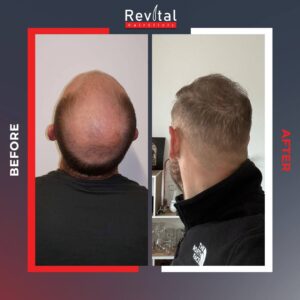What is Hair Transplantation?
Hair transplantation is a surgical procedure that involves transferring hair follicles from one part of the body (typically the back or sides of the scalp) to areas that are thinning or bald. This technique provides a permanent solution to hair loss, especially for individuals suffering from male or female pattern baldness, alopecia, or scarring.
In this article, we will dive deep into what hair transplantation is, the different techniques used, the benefits of the procedure, and what you can expect before, during, and after the treatment.
What Exactly is Hair Transplantation?
Hair transplantation is a cosmetic procedure aimed at restoring lost hair in areas of the scalp or body where hair has thinned or disappeared. The goal is to provide a natural, fuller head of hair that grows permanently.
The process involves:
- Harvesting healthy hair follicles from a donor area (usually the back or sides of the head where hair growth is dense and stable).
- Transplanting those follicles into areas that are thinning or completely bald.
This method is beneficial for individuals who have lost hair due to:
- Genetics (male or female pattern baldness)
- Trauma or injury (scarring from accidents)
- Alopecia (autoimmune-related hair loss)
- Other medical conditions that result in hair loss.
⚕️ How is Hair Transplantation Performed?
There are two primary techniques for hair transplantation: FUE (Follicular Unit Extraction) and FUT (Follicular Unit Transplantation). Both methods have their pros and cons, and the best choice depends on your individual needs, hair loss pattern, and the recommendations of the surgeon.
- FUE (Follicular Unit Extraction)
FUE is one of the most popular and advanced techniques for hair transplantation. It involves the following steps:
- Individual Follicles Removal: Using a tiny, circular punch, the surgeon extracts individual hair follicles from the donor area.
- Preparation and Implantation: The follicles are then prepared and transplanted into tiny incisions made in the recipient area.
Advantages of FUE:
- Minimal scarring
- Faster recovery time
- No need for stitches
- Natural-looking results
- FUT (Follicular Unit Transplantation)
FUT is an older technique but still widely used. It involves:
- Strip Harvesting: The surgeon removes a thin strip of skin with hair follicles from the donor area (typically the back of the scalp).
- Dissecting and Implanting Follicles: The strip is then divided into individual follicular units, which are implanted into the thinning or balding areas.
Advantages of FUT:
- Can transplant a larger number of hair follicles in a single session.
- It may be more cost-effective than FUE in some cases.
Disadvantages of FUT:
- Linear scar in the donor area.
- Longer recovery time.
- DHI (Direct Hair Implantation)
DHI is an advanced form of FUE where hair follicles are implanted directly into the recipient area using a specialized tool called the Choi Implanter Pen. The technique allows for more precise and denser placement of hair follicles.
Advantages of DHI:
- Minimal scarring
- More precise follicle implantation
- Faster healing process
Who is a Good Candidate for Hair Transplantation?
Not everyone is a suitable candidate for hair transplantation. Ideal candidates are typically those who:
- Have stable hair loss (i.e., the hair loss has stopped or slowed down).
- Have sufficient donor hair on the scalp, which can be used for the transplant.
- Are in good overall health and have no serious medical conditions that would hinder the healing process.
- Have realistic expectations regarding the results.
While most people with male or female pattern baldness are suitable candidates, other conditions such as scarring alopecia or hair loss due to trauma can also be treated with hair transplantation.
What Happens Before, During, and After the Procedure?
Before the Procedure:
- Consultation: The process starts with a thorough consultation with a hair transplant surgeon. During this consultation, the surgeon will assess your hair loss, discuss your goals, and design a treatment plan that suits your specific needs.
- Pre-Operative Instructions: You will be given guidelines to follow before the procedure, such as avoiding certain medications, alcohol, or smoking.
During the Procedure:
- Anesthesia: The procedure is typically performed under local anesthesia, meaning you will be awake during the surgery but won’t feel pain in the treated areas.
- Harvesting Hair Follicles: The surgeon will extract hair follicles from the donor area (using either the FUE or FUT method).
- Implantation: The harvested follicles will be implanted into small incisions made in the balding or thinning areas of your scalp.
After the Procedure:
- Recovery Time: The recovery period for a hair transplant varies, but most patients can return to work after about 3-7 days, depending on the technique used.
- Post-Operative Care: You will need to follow post-procedure care instructions carefully. This includes avoiding heavy physical activities, protecting your scalp from sun exposure, and using prescribed medications or shampoos.
- Hair Growth Timeline: New hair growth typically begins around 3-4 months post-procedure. The full results may take 12-18 months to fully appear, as the transplanted follicles need time to establish themselves and begin growing new hair.
Benefits of Hair Transplantation
Hair transplantation offers numerous advantages over other hair loss treatments, such as medications or hairpieces. Some of the benefits include:
- Permanent Results: The transplanted hair is resistant to the hormonal factors that cause hair loss, ensuring long-lasting and permanent results.
- Natural-Looking Hairline: When performed by an experienced surgeon, hair transplants can create a natural, fuller-looking hairline that blends seamlessly with your existing hair.
- Boost in Confidence: Restoring your hairline and hair density can significantly boost self-esteem and confidence, improving your overall quality of life.
- No Need for Ongoing Maintenance: Unlike treatments like medications, hair transplants don’t require ongoing maintenance or repeat procedures once the hair is successfully transplanted.
In Conclusion
Hair transplantation is an advanced, permanent solution for hair loss that can restore both the appearance and self-confidence of those experiencing thinning or baldness. By moving healthy hair follicles from the donor area to the areas of the scalp that are thinning or bald, a hair transplant can provide natural, permanent results.
At Revital Hair Clinic, we specialize in various hair transplantation methods, such as FUE, FUT, and DHI, to offer you the best possible outcomes. If you’re considering a hair transplant, a consultation with one of our experienced specialists can help determine the best approach for you.
Revital Hair Clinic © 2024












Leave a Reply